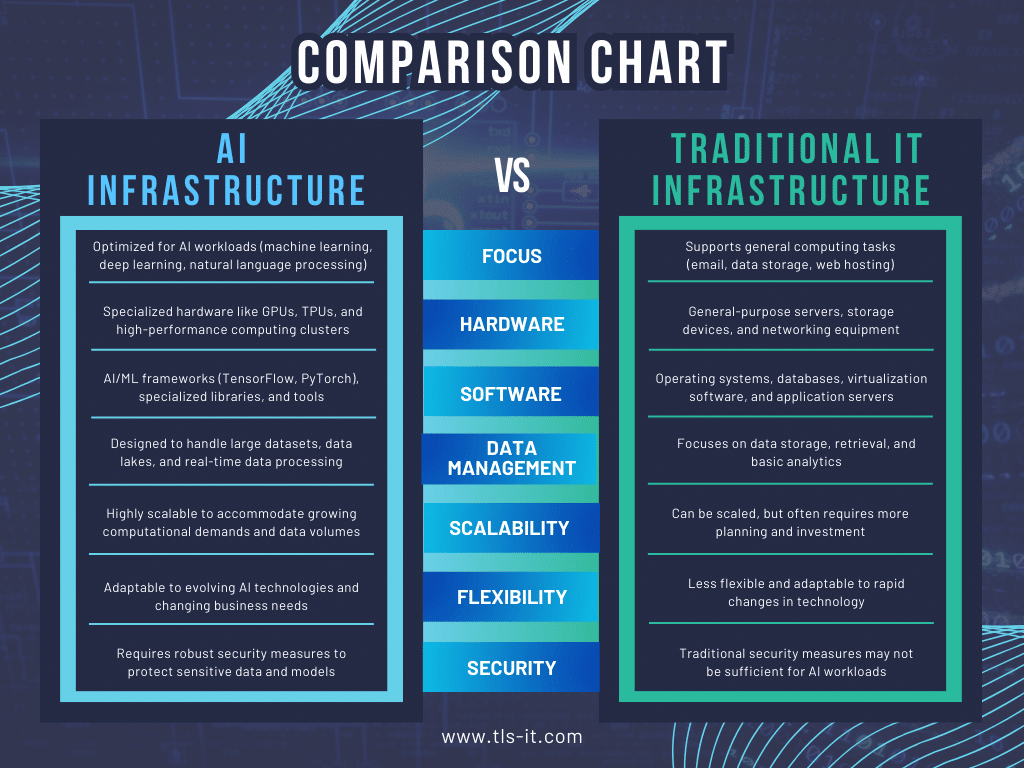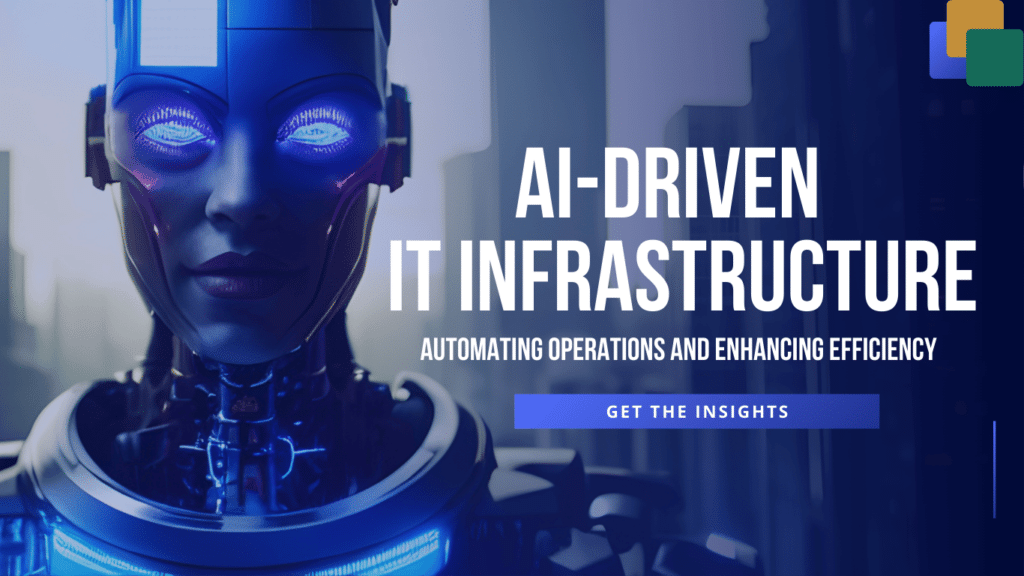You’ve likely heard the buzz around “Artificial Intelligence” revolutionizing IT. It can sound a bit intimidating, like we’re talking about robots taking over! But in reality, while AI plays a role, it’s often more about ‘Automated Intelligence’ in the day-to-day world of IT operations (ITOps).
Think of it this way: Automated Intelligence uses clever computer programs to handle those repetitive, time-consuming tasks that used to bog down IT teams. It’s like having a super-smart assistant that handles the busywork, freeing you up to focus on the really exciting stuff. Imagine an assistant that can flawlessly schedule meetings, order supplies, and even predict when your printer might run out of ink. That’s Automated Intelligence in action!
It’s not about creating a thinking machine, but about using smart technology to make your life (and your IT systems) easier. Automated Intelligence excels at specific, repetitive tasks, following rules and patterns we’ve taught them. It’s about using technology to streamline operations, improve efficiency, and ultimately, make your job as an IT professional more rewarding.
This article explores how AI and automation can revolutionize IT operations and outlines the essential steps to integrate these technologies into your current IT infrastructure.
Why "Automated Intelligence" is a Better Fit
- Focus on the Practical: “Automated Intelligence” better reflects the current state of AI in IT. It emphasizes the practical applications of these technologies, like automating routine tasks and improving efficiency.
- Less Hype, More Action: The term “Artificial Intelligence” can sometimes create unrealistic expectations. “Automated Intelligence” provides a more grounded understanding of what these technologies can actually do.
- Shifting the Focus: It shifts the focus from creating human-like intelligence to building powerful tools that can help IT teams work smarter, not harder.
What Is AI Infrastructure?
AI infrastructure refers to the integrated system of hardware and software components purpose-built to support artificial intelligence (AI) workloads. These workloads include machine learning, deep learning, and large-scale data processing. Unlike conventional IT infrastructure, AI infrastructure is specifically optimized to manage the high computational demands and massive datasets associated with AI applications.
This specialized infrastructure is crucial for efficiently training complex AI models and deploying them into production environments, enabling real-time data processing and actionable insights. It incorporates a variety of advanced technologies, such as GPUs or TPUs for accelerated processing, high-speed networking for seamless data transfer, scalable storage solutions for vast data volumes, and sophisticated software tools for AI model development, training, and management.
AI Infrastructure vs. IT Infrastructure
AI infrastructure and traditional IT infrastructure differ fundamentally in their design and purpose. While IT infrastructure is built to support a wide array of computing tasks, such as office productivity, enterprise resource planning, and general-purpose applications, AI infrastructure is purpose-built to meet the intensive demands of artificial intelligence and machine learning workloads.
AI infrastructure leverages specialized hardware like GPUs (Graphics Processing Units) and other parallel processing units, enabling efficient AI model training and inference. It also prioritizes scalable storage and high-speed networking to handle the massive data volumes required by AI applications. Additionally, AI infrastructure integrates advanced software stacks, including machine learning libraries and frameworks like TensorFlow and PyTorch, which are not typically included in traditional IT setups.
These distinctions focused on high-speed computation, vast data management, and specialized AI tools position AI infrastructure as a critical enabler of innovation in the field of artificial intelligence.

How Does AI Infrastructure Work? Key Components
1. Hardware
At the foundation of AI infrastructure lies its hardware, designed to handle the complex computations required for AI and machine learning tasks. Key components include:
- GPUs (Graphics Processing Units): Optimized for parallel processing, GPUs significantly accelerate the training of machine learning models by performing multiple calculations simultaneously.
- TPUs (Tensor Processing Units): Built specifically for deep learning, TPUs deliver high throughput and efficiency for tensor operations, making them ideal for tasks like neural network training.
- High-Performance Servers: Equipped with substantial memory and storage, these servers support the massive datasets involved in AI model training.
- Networking Equipment: High-bandwidth, low-latency networking solutions ensure rapid data transfer between storage and computational units, critical for AI workloads.
2. Software
The software layer of AI infrastructure provides the tools and platforms necessary for developing, training, and deploying AI models. Key components include:
- Machine Learning Frameworks: Platforms like TensorFlow and PyTorch simplify the implementation and optimization of complex algorithms, including neural networks.
- Data Processing Tools: Software for data ingestion, cleaning, transformation, and augmentation ensures that datasets are properly prepared for training.
- Orchestration and Automation Platforms: These tools streamline the deployment of AI models into production, enabling continuous integration and delivery (CI/CD) for seamless updates and management.
3. Networking
Networking is vital for the seamless transfer and processing of the vast datasets AI applications require. Key features include:
- High-Bandwidth, Low-Latency Networks: Technologies like InfiniBand provide rapid data movement, supporting throughput of up to 400 Gbps for efficient communication between storage and computation units.
- Advanced Networking Solutions: Software-defined networking (SDN) and network function virtualization (NFV) enhance scalability and flexibility, allowing dynamic allocation of network resources to meet AI application demands.
4. Storage
AI infrastructure requires robust storage solutions to manage the large volumes of data consumed and generated by AI applications. Features include:
- High-Capacity Systems: These ensure rapid access and retrieval times, enabling efficient data processing for AI models.
- Object Storage: Well-suited for unstructured data like images and videos, object storage offers scalability and durability to support AI model training.
- Distributed File Systems: These provide high-performance storage solutions that scale with the increasing demands of AI workloads.
By integrating these key components, AI infrastructure ensures the seamless execution of AI workloads, supporting everything from data processing to model deployment.
Want to learn more about how our services can enhance your IT infrastructure? Click here
Benefits of AI-Driven IT Infrastructure
There are many benefits to adopting AI-driven IT infrastructure solutions. Some of the most significant include:
- Increased efficiency: AI can automate many routine IT tasks, freeing up IT staff to focus on more strategic initiatives.
- Reduced costs: By automating tasks and optimizing resource allocation, AI can help to reduce IT costs.
- Improved performance: AI can help to improve the performance of IT systems by identifying and resolving bottlenecks.
- Enhanced security: AI can help to protect IT systems from cyber threats by detecting and responding to attacks in real-time.
- Improved customer satisfaction: By providing faster and more reliable IT services, AI can help to improve customer satisfaction.
How Automated Intelligence is Transforming IT Operations
- Predictive Maintenance: Imagine your IT systems could anticipate problems before they occur. Automated Intelligence can analyze historical data to predict equipment failures, network outages, and even security threats. This allows IT teams to proactively address issues, minimizing downtime and preventing costly disruptions.
- Intelligent Automation: Say goodbye to tedious manual tasks! Automated Intelligence can handle everything from software deployments and system backups to generating reports and even providing basic IT support to employees through chatbots.
- Enhanced Security: Cyber threats are constantly evolving. Automated Intelligence can analyze network traffic, detect anomalies, and identify malicious activity in real-time, providing a robust defense against cyberattacks.
- Improved Efficiency and Cost Savings: By automating routine tasks and optimizing resource allocation, Automated Intelligence can significantly improve the efficiency of IT operations. This translates to reduced costs, increased productivity, and a happier, more focused IT team.
The Future of Automated Intelligence in IT
The future is bright for Automated Intelligence in IT. We can expect to see even more sophisticated applications, such as:
- Self-healing systems: Imagine an IT infrastructure that can automatically identify and resolve issues without human intervention, ensuring continuous service availability.
- AI-powered IT service management: Automated Intelligence can revolutionize how IT services are delivered, providing personalized support experiences and proactive issue resolution.
- The rise of AIOps: AIOps combines AI, machine learning, and big data analytics to provide a holistic view of IT operations. This allows IT teams to gain deeper insights, make more informed decisions, and proactively address potential challenges.
The Human Element:
It’s important to remember that Automated Intelligence is not about replacing humans. Instead, it’s about empowering IT teams to work more effectively. By automating routine tasks, Automated Intelligence frees up IT professionals to focus on strategic initiatives, such as innovation, digital transformation, and improving the overall business value of IT.
Conclusion
Automated Intelligence is not just a buzzword; it’s revolutionizing the way we manage and operate IT infrastructure. By embracing these technologies, businesses can gain a competitive advantage, improve service delivery, and unlock new levels of efficiency and innovation. So, let’s embrace the power of Automated Intelligence and shape the future of IT together.
Key Takeaways:
- Automated Intelligence” provides a more accurate description of how AI is transforming IT.
- It focuses on automating tasks and processes rather than achieving true artificial consciousness.
- Key benefits include increased efficiency, reduced costs, improved security, and enhanced performance.
- The future holds exciting possibilities, including self-healing systems, proactive resource management, and even more sophisticated cybersecurity measures.
Boost Efficiency and Secure Your Business with TLS IT Solutions!
At TLS IT Solutions, we help businesses use advanced IT solutions to boost innovation and improve efficiency. Discover how we can improve your IT systems and strengthen your security with the latest technology. Visit www.tls-it.com today and work with us to secure your business’s future!




